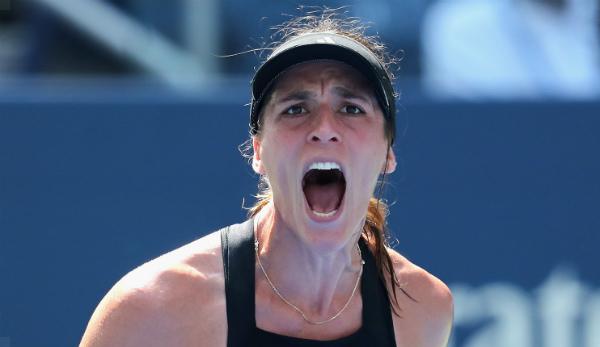Andrea Petkovic and Laura Siegemund were eliminated in the first round of the US Open. For both of them, the path back to their old strength is rocky.
Seven years ago, when Angelique Kerber was desperate about herself and her tennis life, Andrea Petkovic was there to help. Petkovic was Kerber’s best friend at the time, but she was also number 1, the first girl combo to move up to the top of the world.
Petkovic brought the crisis-ridden Kieler to the Offenbach Tennis Academy, where the international players trained together for an entire summer, Kerber as hard as never before. With a curious result: Kerber, just ready to give up her career, reached the semi-finals at the US Open – it was the starting signal for a long ascent up to Grand Slam successes and the once seemingly utopian leap to the top of the rankings. And Petkovic: She slipped slowly and slowly downhill in the pecking order, she struggled with ever new injuries, had to make repeated comeback attempts.
On Tuesday Petkovic and Kerber played in a row at the new Louis Armstrong Court at the US Open – for Kerber it was their first and successful appearance (7:6, 6:3 against Margarita Gasparyan) after the unique career highlight in Wimbledon, the final victory against Serena Williams.
For Petkovic, on the other hand, it was the next bitter setback in what was probably his last major return to old glory. Petkovic fought the world ranking tenth Elena Ostapenko with the highest intensity in fiery heat, again and again she caught up in the open-air sauna of Flushing Meadow, only to march off the field as a frustrated 4:6, 6:4, 5:7 loser.
It was almost a little symptomatic, this bitterly early conclusion of the US Open campaign, symptomatic of the difficult, stony path Petkovic is taking. “I’m not giving up. I notice that I’m taking steps forward,” Petkovic said afterwards. In the summer, after all, she had beaten several rivals of rank, including last year’s US Open winner Sloane Stephens. She is currently 89th in the world rankings, somehow in no man’s land.
Petkovic was, as I said, once the German number one. Also the spokeswoman in national women’s tennis and something like the extended arm of the then Fed Cup boss Barbara Rittner. Laura Siegemund hadn’t got that far when her career suffered a sudden setback – but in May 2017 the wiry Swabian felt like the number 1 in German women’s tennis, she had just become the proud winner of the Porsche Grand Prix in Stuttgart, while Kerber was in deep crisis.
Siegemund was even considered one of the top favourites for the French Open at the time, but then came the fateful moment of Nuremberg, the rupture of the cruciate ligament, which brutally stopped the late upswing of the Metzingerin. “It was as if you were thrown into hell by cloud seven,” said Siegemund once.
15 months later, she is still struggling with the aftermath, experiencing, like Petkovic, how difficult it is to reconnect with the best and very best. “I feel in top shape again,” says Siegemund, “but often there is no feeling of what you have to do, as in certain moments. “There is no self-evidence in the game.”
Siegemund currently starts certain tournaments with a protected ranking place, actually she would not come as number 148 of the charts into a main field like at the US Open. The immediate goal for Siegemund now: A place among the Top 100, which would also enable participation in the Majors in the next season – and thus also a financial framework to cover running costs. “I have to be patient, but patience is not necessarily one of my strengths,” says Siegemund.
Like Siegemund, Petkovic has not lost hope that things will go far forward again. “I’ve just been fooling around for two years, I haven’t had a clear line. But now I’m greedy again, highly motivated,” says the Darmstadt native, “I’ve found my faith in myself again. The question marks and doubts are gone.” But the great, resounding success is not yet there either. Not even at Siegemund, who says: “I am often very upset that things are not really moving forward. But then I say to myself: You’ve already come quite a long way. “There’s still a lot of possibilities, many good years.”














You must be logged in to post a comment Login